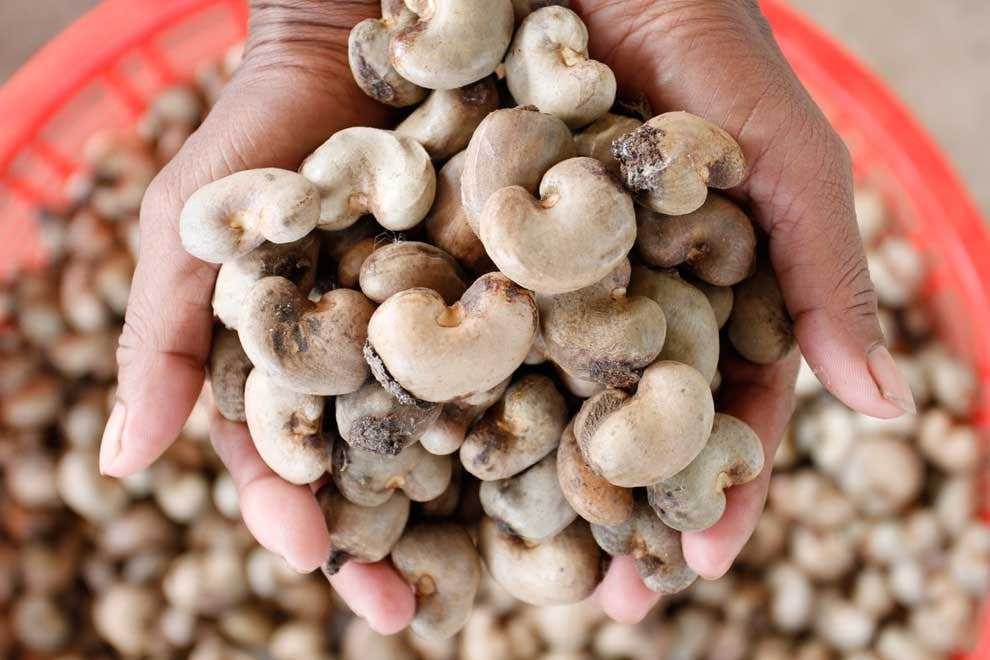The global cashew market has been experiencing significant shifts in demand, prices, and projections in recent years. Cashews are one of the most popular tree nuts in the world, known for their rich flavor and health benefits. As consumer preferences and market dynamics continue to evolve, stakeholders in the cashew industry must stay informed about the latest trends to make informed decisions and drive growth.
𝐂𝐚𝐬𝐡𝐞𝐰 𝐍𝐮𝐭𝐬 𝐌𝐚𝐫𝐤𝐞𝐭 𝐒𝐢𝐳𝐞 / 𝐍𝐮𝐦𝐛𝐞𝐫
The global cashew market witnessed significant growth, with its market size reaching an impressive USD 7 billion in 2022. Projections indicate that this market is on a robust upward trajectory and is expected to achieve a substantial value of USD 10.5 billion by the year 2031.
This anticipated growth reflects a compound annual growth rate (CAGR) of 4.6% over the forecast period spanning from 2022 to 2031. This steady expansion underscores the increasing demand for cashews driven by various market dynamics, including rising consumer health consciousness, the popularity of plant-based diets, and the expanding use of cashews in various culinary applications.
The ongoing development in production techniques and the growing emphasis on sustainable and ethical sourcing practices are also contributing factors to the optimistic outlook for the global cashew market over the next decade.
Demand for cashews has been steadily increasing in recent years, driven by factors such as changing dietary preferences, growing awareness about the health benefits of cashews, and increasing disposable incomes in emerging markets. One of the key factors driving the demand for cashews is their nutritional value. Cashews are rich in nutrients such as vitamins, minerals, and antioxidants, making them a popular choice for health-conscious consumers. They are also a good source of protein and healthy fats, making them an ideal snack option for those looking to maintain a balanced diet. As a result, cashews have become a staple in the diets of many people around the world, contributing to the increasing demand for the nut.
In addition to their nutritional value, cashews are also known for their versatile flavor profile, making them a popular ingredient in a wide range of culinary applications. From savory dishes such as curries and stir-fries to sweet treats like cookies and cakes, cashews are used in a variety of recipes to add flavor, texture, and nutrition. This versatility has contributed to the growing popularity of cashews among consumers and food manufacturers alike, driving further demand for the nut in the global market.
Another factor influencing the demand for cashews is the increasing popularity of plant-based diets. As more consumers adopt vegetarian, vegan, and flexitarian lifestyles, the demand for plant-based protein sources such as cashews has been on the rise. Cashews are a rich source of plant-based protein, making them an attractive option for those looking to reduce their consumption of animal products while still meeting their protein needs. This trend is expected to continue driving the demand for cashews in the global market, as more people seek out plant-based alternatives to traditional animal products.
On the supply side, the cashew market is facing challenges such as fluctuating prices, supply chain disruptions, and climate change. Cashews are primarily grown in countries such as Vietnam, India, and Ivory Coast, where climatic conditions play a significant role in determining the yield and quality of the crop. Climate change poses a threat to cashew production, as rising temperatures and erratic weather patterns can lead to crop failures and reduced yields. This can impact the global supply of cashews and drive prices up, affecting both producers and consumers in the market.
In recent years, the cashew market has also been affected by fluctuations in prices, driven by factors such as changes in demand, trade policies, and currency exchange rates. Price volatility in the cashew market can create uncertainty for stakeholders, making it challenging to plan and forecast future sales and investments. To mitigate the impact of price fluctuations, cashew producers and traders must stay informed about market trends, monitor global supply and demand dynamics, and implement risk management strategies to protect their businesses from market uncertainties.
Looking ahead, the projections for the global cashew market remain positive, with continued growth expected in the coming years. As consumer demand for healthy snacks and plant-based foods continues to rise, the demand for cashews is expected to remain strong, driving growth in the market. In addition, advancements in technology and supply chain management are expected to improve the efficiency of cashew production and distribution, leading to increased availability and accessibility of cashew products for consumers worldwide.
In conclusion, the global cashew market is experiencing significant trends in demand, prices, and projections, driven by factors such as changing consumer preferences, health awareness, and dietary trends. To capitalize on the opportunities in the market, stakeholders in the cashew industry must stay informed about the latest trends, monitor market dynamics, and implement strategies to navigate the challenges posed by price volatility and supply chain disruptions. By staying ahead of the curve and adapting to the evolving market landscape, players in the cashew industry can position themselves for success and drive growth in the global market.
To find out more about how we can fulfil your requirements, please follow our social media channels, subscribe to our mailing list, or reach out directly to us via our contact us page. We will be happy to help!




